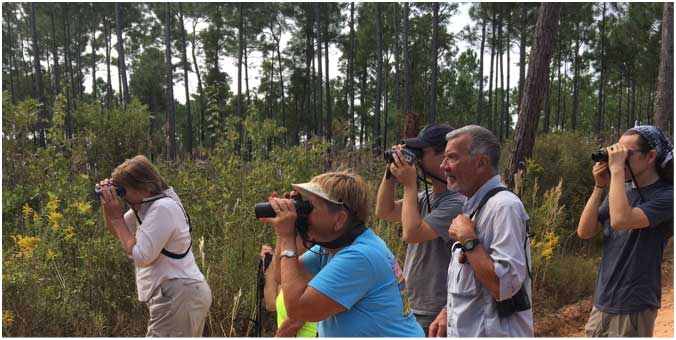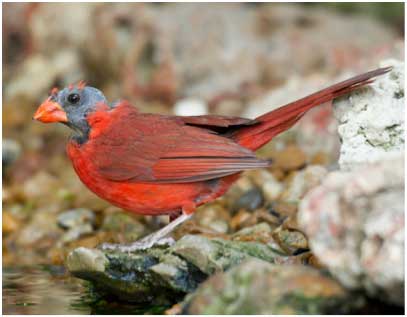Wheeler Wildlife Refuge, headquartered in Decatur, Alabama, is on the Eastern migration route for the Whooping Crane, seen here with a group of Sandhill Cranes. Photo courtesy of George Lee.
Important Bird Areas (IBA’s)
 An Important Bird and Biodiversity Area (IBA) is an area identified as being important for the conservation of bird populations.
An Important Bird and Biodiversity Area (IBA) is an area identified as being important for the conservation of bird populations.
IBA was developed and sites are identified by BirdLife International, a global partnership of conservation organizations focusing on conserving bird habitats and associated biodiversity. The National Audubon Society administers the IBA program in the United States. Currently there are over 12,000 IBAs worldwide. Alabama has 24 IBAs that are considered important on a state level and 6 that are ranked on a global level. Wheeler Wildlife Refuge in north Alabama (Limestone, Madison and Morgan counties) is designated as an IBA of global importance.
Nearby state-level IBAs include Bankhead National Forest (Franklin, Lawrence and Winston counties), and the Walls of Jericho/ Skyline Wildlife Management Area (Jackson county).
 Have you ever seen a Northern Cardinal with a bald head? If so, you may wonder what cruel trick Nature is playing on this once lovely bird. Every year in late summer my resident pair of Northern Cardinals drop all of their head feathers at once. They look like small vultures or possibly, lizard heads grafted on to a bird’s body. Is this normal?!
Have you ever seen a Northern Cardinal with a bald head? If so, you may wonder what cruel trick Nature is playing on this once lovely bird. Every year in late summer my resident pair of Northern Cardinals drop all of their head feathers at once. They look like small vultures or possibly, lizard heads grafted on to a bird’s body. Is this normal?!